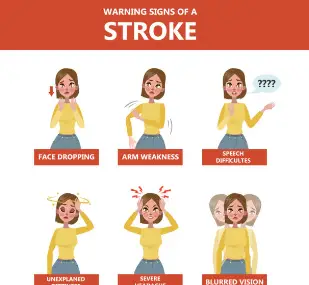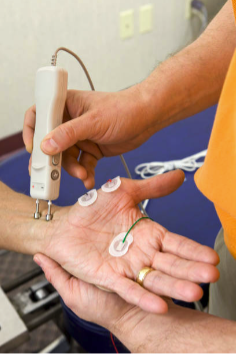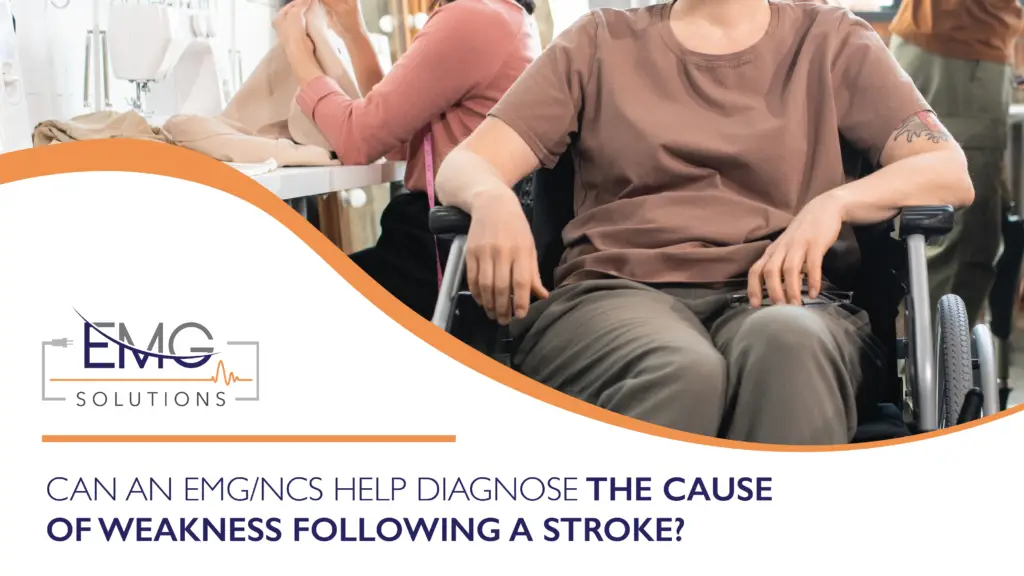Strokes are relatively common, affecting millions of people each year. In the United
States, for instance, about 795,000 people have a stroke annually, making it the fifth
leading cause of death. A stroke occurs when the blood supply to part of the brain is
interrupted or reduced, preventing brain tissue from getting oxygen and nutrients. This
can lead to brain cell death within minutes. There are two main types of strokes:
- Ischemic Stroke: This is the most common type and occurs when a blood
vessel supplying blood to the brain is blocked, often by a blood clot. - Hemorrhagic Stroke: This happens when a
blood vessel in the brain bursts, leading to
bleeding in or around the brain.

Risk factors include high blood pressure, smoking, diabetes, and high cholesterol, and their prevalence contributes to the frequency of strokes. Common symptoms of a stroke include sudden numbness or weakness (especially on one side of the body), confusion, trouble speaking or understanding speech, difficulty seeing in one or both eyes, and loss of balance or coordination.
Can an EMG/NCS help diagnose the cause of weakness following a stroke?
Would it be beneficial to have a nerve conduction (NCS) test or electromyography (EMG) test to assist with assessment of damage caused by a stroke? The answer is no.
An EMG (electromyography) study assesses the electrical activity of muscles and the nerves that control them, focusing on peripheral nerves and muscle fibers. A stroke primarily affects the brain and its ability to communicate with the muscles, rather than directly impacting the muscles or peripheral nerves themselves.
Here’s why a stroke might not show on an EMG:
1.) Location of Damage: A stroke occurs in the brain, affecting motor control. EMG
measures muscle and nerve function in the periphery, which might not reveal
changes caused by central nervous system damage.

2.) Type of Changes: In cases of stroke, the resulting muscle weakness is due to
impaired signaling from the brain. EMG can show muscle activity but may not
reflect the central processes involved in a stroke. Some studies have discussed the use of EMG in acute care settings to assist with biofeedback and training of
muscles for training, but it is not recommended for diagnostic purposes.
3.)Timing: If the EMG is performed soon after a stroke, it may not capture the full
effects or changes in muscle activity, as there may be a delay before changes
become apparent. This change in muscle activity, also known as atrophy, occurs
over time as the limbs being affected are less frequently due to weakness or
paralysis.
4.) Primary Focus: EMG is typically used to assess neuromuscular disorders,
peripheral nerve injuries, or muscle diseases, not central nervous system
conditions like stroke.
A nerve conduction study (NCS) primarily evaluates the electrical function of
peripheral nerves. It measures how quickly electrical impulses travel through the
nerves, helping to diagnose conditions like peripheral neuropathy or nerve compression.
A stroke, on the other hand, typically affects the brain and may lead to changes in motor
or sensory function, but it wouldn’t be directly notable on an NCS. This is because no
damage to the nerves has occurred, and therefore would produce a normal nerve
conduction study.
For optimal assessment of the effects of a stroke, it is recommended to use imaging
techniques, such as a CT or MRI scan, or clinical evaluation of neurological deficits.
Karah Loftin, PT, DPT
EMG Solutions Resident
Sources:
Steele KM, Papazian C, Feldner HA. Muscle Activity After Stroke: Perspectives on Deploying
Surface Electromyography in Acute Care. Front Neurol. 2020 Sep 23;11:576757. doi:
10.3389/fneur.2020.576757. PMID: 33071953; PMCID: PMC7538789.
Azzollini V, Dalise S, Chisari C. How Does Stroke Affect Skeletal Muscle? State of the Art
and Rehabilitation Perspective. Front Neurol. 2021 Dec 23;12:797559. doi:
10.3389/fneur.2021.797559. PMID: 35002937; PMCID: PMC8733480.
Chichkova, R., & Lara Katzin. (n.d.). EMG and nerve conduction studies in clinical practice.
Practical Neurology. https://practicalneurology.com/articles/2010-jan-feb/emg-and-nerve-
conduction-studies-in-clinical-practice
Mayo Foundation for Medical Education and Research. (2024, October 1). Stroke. Mayo
Clinic. https://www.mayoclinic.org/diseases-conditions/stroke/symptoms-causes/syc-
20350113



